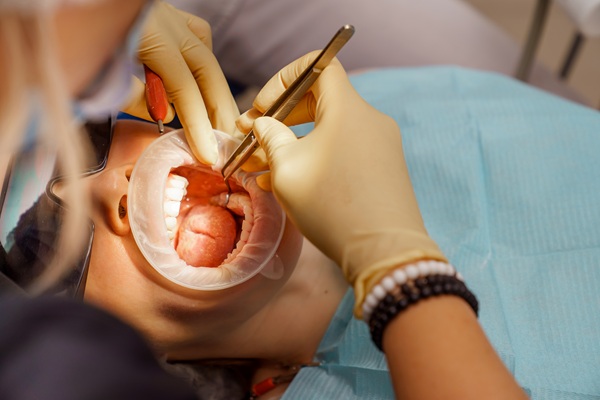How To Reduce the Risk of Dry Socket After a Tooth Extraction
A involves removing damaged, decayed, or impacted teeth. While recovery is usually straightforward, complications can happen. For instance, dry socket is a condition that occurs when the protective blood clot at the extraction site is dislodged or dissolves too soon, exposing the underlying bone and nerves. Fortunately, dry socket is preventable with proper care.
Tooth extractions and dry socket
Tooth extractions are routine procedures that general and family dentists use to remove a problem tooth from its socket in the jawbone. After extracting the tooth, a blood clot naturally forms in the empty socket. This clot acts as a protective barrier that facilitates healing and prevents infection. In most cases, the clot stays in place, allowing the area to gradually recover over the following days and weeks.
Dry socket, medically referred to as alveolar osteitis, occurs when this clot becomes dislodged or fails to develop properly. Without this protective layer, the socket is exposed to air, food, and bacteria, which can cause pain and prolong healing. This condition usually develops within three to five days after a tooth extraction and is more common in lower molar removals.
Common dry socket symptoms include sharp pain, visible bone in the socket, bad breath, or an unpleasant taste in the mouth. Prompt treatment from a general or family dentist can relieve symptoms and support the healing process. Still, prevention remains the most effective approach.
Ways to reduce the risk of dry socket
In general, preventing dry socket involves following the general or family dentist’s post-operative instructions closely to rest and recover. A few simple precautions can significantly reduce the likelihood of complications and promote faster healing. These include:
Avoid straws and suction
Using a straw can create suction inside the mouth, which may dislodge the blood clot that forms after tooth extraction. This suction can disturb the delicate healing tissue and leave the socket vulnerable to irritation, infection, or dry socket. To avoid this, patients can drink directly from a glass and avoid any actions that require suction, such as smoking, for at least several days.
Eat soft foods
In the days following a tooth extraction, choosing soft, easy-to-chew foods can help protect the extraction site and minimize irritation. Hard, crunchy, or chewy foods can disturb the socket or cause debris to become trapped in the wound. Opting for items like yogurt, mashed potatoes, applesauce, and smoothies (without using a straw) can support healing while providing necessary nutrition. These foods require minimal chewing and reduce the likelihood of disrupting the blood clot or causing accidental trauma to the area.
Be gentle when brushing
Oral hygiene is essential after a tooth extraction, but take care not to disturb the healing socket. Gentle brushing and rinsing help prevent infection without disrupting the clot. The area surrounding the extraction site can be brushed with a soft-bristled toothbrush, avoiding direct contact with the empty socket. The dentist may recommend avoiding brushing the extraction site for the first 24 hours and using a saltwater rinse instead.
Protect your smile after tooth extraction
With aftercare and time to rest, patients can make a smooth recovery from tooth extraction. To learn more about avoiding dry socket and recovering after an extraction, reach out to 508 Dentist. We can address any questions and concerns you may have in an appointment.
Request an appointment here: https://swansea.508dentist.com or call 508 Dentist at (508) 570-2332 for an appointment in our Swansea office.
Check out what others are saying about our dental services on Yelp: .
Related Posts
Wisdom teeth, also called the third molars, often cause concerns with oral health, lead to pain, or do not allow for proper spacing to occur. While many individuals can wait until after they are adults to have wisdom teeth removed, a dental professional may recommend early removal for teenagers in certain situations.Wisdom teeth removal may…
A wisdom tooth extraction is a popular procedure that most people are familiar with. However, as with most popular knowledge, not everything people believe is true, and that includes beliefs about removing wisdom teeth. Debunking these myths is important as they could be prohibiting individuals from getting the procedure that is necessary to maintain good…
An emergency dentist can be a reassuring source of professional care in moments of sudden dental pain, injury, or complications. Addressing unexpected problems promptly helps prevent further damage and protect oral health. Having a clear plan and following expert recommendations will make managing stressful dental emergencies easier, maintain healthy teeth and gums, and reduce the…
Root canal therapy is often the final step in saving a severely damaged or infected tooth. However, in most cases, a general dentist will recommend placing a dental crown after root canal therapy to contribute to your long-term oral health. This restoration strengthens and protects the treated tooth, helping the tooth to maintain its function,…
